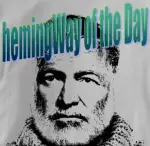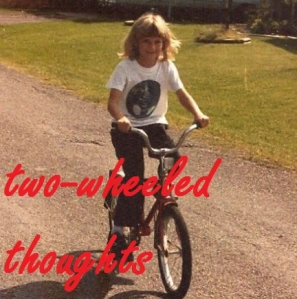In preparation for an upcoming visit to Kentucky, and because he appears everywhere around me and I have not devoted the time yet: Wendell Berry.
More than a year ago, my father bought me a copy of the new collection, The World-Ending Fire, selected and with an introduction by Paul Kingsnorth (who I do appreciate). I regret that I have not made time for it yet; and it’s currently boxed up in a storage unit (along with so many other excellent books) and unavailable to me. But Pops still set me up with some reading, beginning with an email explaining his selections, and outlining some of Berry’s major themes: sense of place; tragedies of American history; the urban-rural divide; humility; soil; honest work; naturalism; spirituality. Then he had me read Kingsnorth’s introduction to the new collection, and one noteworthy Berry essay: “A Native Hill.”
As an overall, obviously I appreciate Wendell Berry. All the right ingredients are there: strong attachment to place, defense of the land, argument against larger society, thoughtful, lovely prose. I had always assumed I would appreciate Berry. Also, I’ve heard that he can be difficult, and dated. Kingsnorth notes in his introduction that Berry’s writing technology of choice is, firmly, the pencil: I have no problem with tried and true technologies (recall Boyle). But I am a bit pricklier about gender and race, for example. Berry (like so many) uses “man” to stand for all humanity. And he is still using “Negro” in this essay, which admittedly was published in 1968. But one notices these things, in 2019.
This reading didn’t surprise me much, then. I found a few things to quibble with, which I will lay out below. But overall, I’m going to keep reading and appreciating this man, while reserving the right to quibble.
Here are a series of quotations I marked as I read, which I’m going to let stand as my review.
Why should I love one place so much more than any other? What could be the meaning or the use of such love?
Way to jump right in and steal my heart. Why, indeed? You, faithful blog reader (thank goodness for you), know how much place matters to me as a reader and as a writer. It consumes my thoughts and dreams.
About the truism that “you can’t go home again”:
But I knew also that as the sentence was spoken to me it bore a self-dramatizing sentimentality that was absurd. Home–the place, the countryside–was still there, still pretty much as I left it, and there was not a reason in the world I could not go back to it if I wanted to.
Well lucky you, Berry, but you do realize not everyone has the luxury of this experience? The places that are left untouched from our childhoods are fewer and fewer. Mine is not still there pretty much as I left it, at all. Dog help us, they tore down Fitzgerald’s.
What… made the greatest difference was the knowledge of the few square miles in Kentucky that were mine by inheritance and by birth and by the intimacy the mind makes with the place it awakens in.
Again, lucky you. And hey, I am lucky that my parents will almost certainly leave me some piece of land, but it’s not square miles, and it’s not something I was born to; it’s something they bought later in their lives and that I admire but do not feel especially close to; it’s not where I grew up. (Not for lack of effort, on my part or theirs, to make this place feel like home.) Some of these ideals are easy to live when you’re born with the right set of circumstances, hmm? And what would you say to someone whose inheritance, birth, and intimacy lay with the heart of New York City?
I had made a significant change in my relation to the place: before, it had been mine by coincidence or accident; now it was mine by choice.
and
In this awakening there has been a good deal of pain. When I lived in other places I looked on their evils with the curious eye of a traveler; I was not responsible for them; it cost me nothing to be a critic, for I had not been there long, and I did not feel that I would stay. But here, now that I am both native and citizen, there is no immunity to what is wrong. It is impossible to escape the sense that I am involved in history.
These I feel, too, with regards to Texas.
And so here, in the place I love more than any other and where I have chosen among all other places to live my life, I am more painfully divided within myself than I could be in any other place.
Because of the quotation directly above: no place we love will ever be perfect. Kentucky and Texas have their share of sins, but if one of you lives in a place that never did harm, throw your stones now.
A path is little more than a habit that comes with knowledge of a place. It is a sort of ritual of familiarity.
By contrast, a road:
Its aspiration, as we see clearly in the example of our modern freeways, is to be a bridge.
I appreciated his medium-deep dive here into paths, trails, roads, bridges, what they mean physically and metaphorically. Trails matter to me; and they make an excellent metaphor.
The pristine America that the first white men saw is a lost continent, sunk like Atlantis in the sea.
I worry about this, as another form of deifying the past, or in this case the Native Americans. Were they really doing this world no harm? I admit to the same prejudice Berry shows here, thinking that no, they did no harm. But now I wonder if that’s true? It reeks of romanticizing what we don’t understand.
It is as though I walk knee-deep in its absence.
A lovely line; I think we all know what it is to walk knee-deep in an absence of some kind; also, I’m almost certain this line was referenced by Matt Ferrence, which endears it to me again.
Near its end, this essay reminds me of Scott Russell Sanders, specifically the hawk that closes “Buckeye.” The final section of Berry’s essay offers a series of short, nearly prose-poetry segments. Third from last of these is an event that proves, for Berry, that nature knows not only peace by joy. It stars a great blue heron (parallel to Sanders’s red-tailed hawk), a bird that is important to me personally: it’s probably the first bird I learned to identify on my own, an easy one, since it’s both large and distinctive; and they have been present in many of the places I’ve traveled in this country, remote and far-flung, as well as in the urban setting of my hometown of Houston, where I used to see them fishing in the early mornings along the bayou in the Texas Medical Center as I walked from car or train station to work. This bird Berry describes as measured, deliberate, stately, “like a dignitary,” stately again – I agree on all counts – and then he sees it turn a loop-the-loop in the air, exultant, “a benediction on the evening and on the river and on me.” This transcendent moment – and Berry’s powerful prose – affected me deeply.
And then, one evening a year later, I saw it again.
Wow.
I do recommend this essay by Berry, and I will be reading more of him – though I may have to dig through that storage unit to do so.
I could not close without referring you, as Pops referred me, to “The Peace of Wild Things”. I had encountered this poem before, but Pops points out that it’s published the same year as “A Native Hill,” and condenses and distills much of the essay’s feeling. It’s worth another look, no matter how familiar you are.
Rating: 8 threads of light and sound.
Filed under: book reviews | Tagged: essays, nature, nonfiction, Pops, sense of place | 1 Comment »
First published in Finland in 2012, Wiki says she wrote it simultaneously in her native Finnish language and English; it is now out in English too (2014); she lives in England.



















